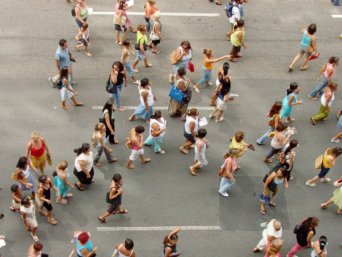- About
- Topics
- Picks
- Audio
- Story
- In-Depth
- Opinion
- News
- Donate
- Signup for our newsletterOur Editors' Best Picks.Send
Read, Debate: Engage.
| topic: | Human Rights |
|---|---|
| located: | Afghanistan, USA, Ukraine |
| editor: | Gurmeet Singh |
Germany gradually reopens. Its 16 states have the power to decide for themselves how and when to ease lockdowns, but all of them, under Angela Merkel’s leadership, opted for a steady, almost uniform approach. Cafes, restaurants and some sports venues have been allowed to reopen, but under strict rules.
Furthermore, the country is beginning to negotiate a financial package and revised borrowing system with the EU, in a bid to evenly spread the burden of the crisis.
As such, the country, on paper at least, is beginning to satisfy both the right-wing calls to reopen the country, and leftist international calls to support other nations.
However, one group is deeply unhappy: the COVID-19 protestors. Or, more accurately, Neo-Nazis, the far-right, anti-semites, anti-vaxxers, the extreme left and miscellaneous conspiracy theorists.
The Guardian writes:
“Among the protesters are those who accuse the government of inventing the virus in order to impose dictatorship-like conditions. Their anger is focused on everyone from the chancellor, Angela Merkel, and her health minister, Jens Spahn, to the virologists and epidemiologists who are advising them. The US billionaire Bill Gates, the founder of Microsoft who has committed to a fund to solve the crisis, is often depicted at the demonstrations as a satanic figure, accused of engineering the health emergency in order to achieve world dominance.
A celebrity vegan cook, a prominent R&B singer, and a former broadcast journalist turned YouTuber are among the movement’s figureheads. Some align themselves with an initiative called “Querdenken” or lateral thinking, whose symbol is a pendant fashioned out of a tinfoil ball. Another movement, called “Widerstand 2020” or resistance 2020, headed by a lawyer, a psychologist and an ear, nose and throat specialist, is also gaining support.”
DW reports on the social make-up of the protests:
“In Germany, political scientists conducting research into the most recent protests have drawn comparisons with the Vigils for Peace that were triggered by the pro-Russian unrest in Ukraine in 2014. Though they began as a protest movement for peace, the events soon attracted people with an anti-US worldview and others with far-right tendencies, anti-Semites and conspiracy theorists.
"The way in which protest is expressed can be viewed from a German cultural perspective," said Jan Rathje, an expert on anti-Semitism and conspiracy theories at the Amadeu Antonio Foundation in Berlin. 'As in 2014, there is a rapprochement between people who would describe themselves as being on the left and others who are right wing or even far right. They are coming together against 'those in charge,' against the 'great conspiracy' that they are trying to avert and resist'."
It seems unlikely that these new social bonds will last beyond several waves of Coronavirus; if there is any semblance of normality to which the country can return, then it will probably be the case that these disparate groups of people return to their normal areas of protest.
However, given that anti-virus measures are going to last for a while, these groups may offer an insight into our future. We’re being asked to take care of one another; for some people, this is already too much. Our future may require building societies that are reliant on mutual help and consensus-building and yet, these societies may not be given a chance.
Image by johnpotter

